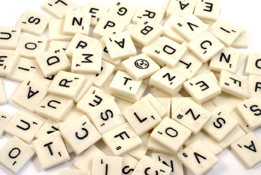
Hemera/Thinkstock
In Try This 2 you may have found that the problem can be represented by ![]()
When generalized for n objects taken r at a time, the total number of permutations is 
In Try This 3 you will use the tile data you collected in Discover to work with the permutations formula.
Try This 3
- Retrieve your chart from Try This 1 and add one extra column,
 , to the chart as follows.
, to the chart as follows.
Number of Tiles in Box
Number of Draws from Box
Total Number of Possible Permutations
List Possible Permutations 
2
2
2
AE, EA
2
1
2
A, E
3
3
3
2
3
1
4
4
Don’t list
4
3
Don’t list
4
2
Don’t list
4
1
5
5
Don’t list
5
4
Don’t list
5
3
Don’t list
5
2
Don’t list
5
1
-
Determine which column represents n and which column represents r.

-
Complete the chart by calculating
 for the remaining rows. Show your work.
for the remaining rows. Show your work.
Special Note: 0! is defined as 1.
- In what instances could n! alone be used to calculate the number of permutations, and when must
 be used? Provide an example from the chart.
be used? Provide an example from the chart.